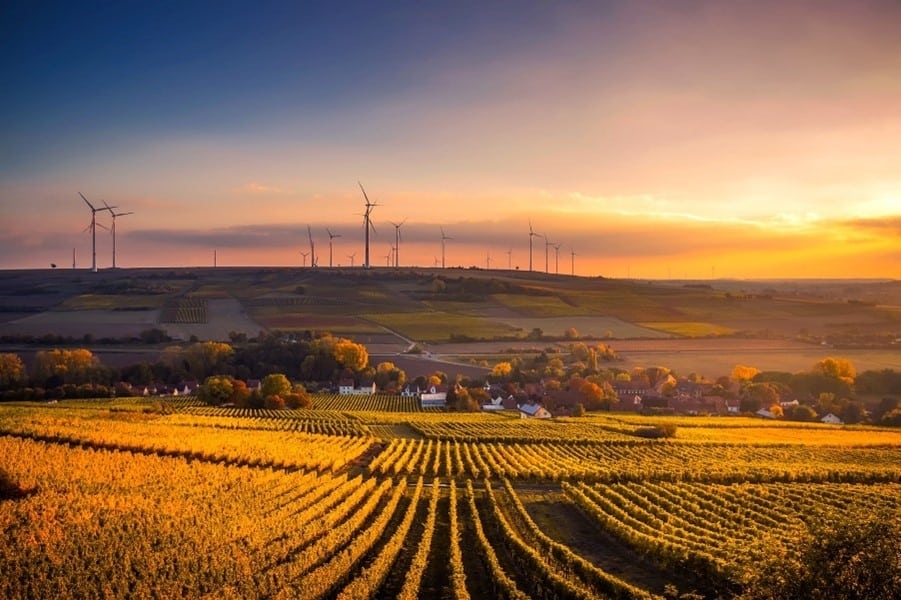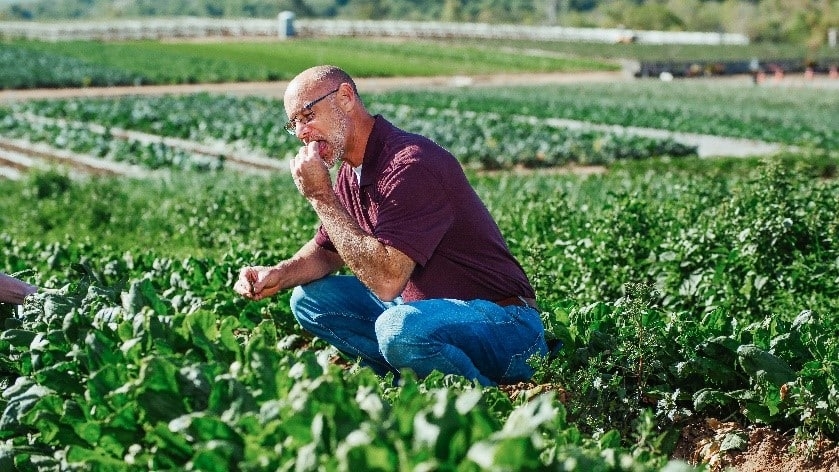
Sustainable food production
Things to think about when it comes to sustainable food production!
While the current food production is not yet fully sustainable, it can certainly become that way! Now, what if I tell you how you can do your part, does that spark your interest? In this article, you will read all about sustainable food production, how we do our part and how you can contribute. Interested to learn more? Here is a little preview: eat seasonal products when they are in season!
What is sustainable food production?
Sustainable food production involves consuming and producing food in a system where no economic, social, or environmental foundations of food are compromised, both now and in the future. This is the accumulation of all activities of the society in the processing, distribution, production, processing, and consumption of food, including the consequences of all these activities. Some of these impacts can be measured on the basis of indicators. Examples include water use, land use, biodiversity, emissions of various greenhouse gases, and resource usage.
“A sustainable food production is the collection of all the activities a society undertakes in the processing, distribution, production, processing, and consumption of food, including the impact of all these activities.”
Trends and developments in a sustainable food production
Both you and I live in a world that is changing rapidly, and so is the production of our food. The market share of sustainable food has shown considerable growth as we are all moving faster and faster toward sustainable food production. The market share of sustainable food has increased from 14% to 16% (2020) in the space of a year. A decade ago, the market share was only 3.5%.
Other developments receiving increasing attention are alternative protein sources. For instance, alternative proteins are gaining more acceptance. Also, more and more new protein sources are emerging. Often, these products act as meat substitutes. Examples include insects, microalgae, seaweeds, legumes, mushrooms, nuts, and cultured meat. The main sustainability aspects to achieve sustainable food production in alternative proteins are greenhouse gas emissions, land use, and water consumption. These aspects are less environmentally damaging in alternative proteins than in traditional products.
The third trend in sustainable food production is to reduce food waste. At the time of writing, around a third of all food is wasted worldwide. This is way too much! Research shows that with the wasted food, all world hunger could be solved. This really puts things in perspective. A big reason for food waste is a result of maldistribution, which is often due to changing demand or weather. But some companies do get it right, a great example of this is Coffee Reborn; they make chocolate from dried coffee grounds.
Would you like to know more about trends and development in sustainable food production? Read more via this link! (Dutch link)
“At the time of writing, about a third of all food is wasted worldwide. This is way too much!”
How do we contribute to sustainable food production?
Most people want to contribute to more environment-friendly food production. But, apart from all the regular measures people take, what can we as Marcelissen do to contribute to sustainable food production? How do we realize sustainable food production together with our customers? One of the ways we do this is with our Sliver Remover. The Sliver Remover is one of the (sustainable) machines we have developed and built. This machine sorts all the too-thin pieces out of the good product stream. However, these too-thin pieces are not thrown away. After all, that would not be sustainable. From the chips that are too thin, potato snacks can be made in the form of mash or croquettes. This allows the whole product to be used. Furthermore, also our Optical Sorters contribute, but they do it slightly differently. These machines optically inspect each product. By doing this potatoes that would be categorized as waste, can be used for other purposes.
By the way, are you curious about our Sliver Remover? Check out the video below!
How can you contribute to sustainable food production?
After reading everything so far, you already know a lot more about the topic. (Or perhaps you just skipped to our tips 😉 ) In any case, you’ve now arrived at perhaps the most important part of this blog. Are you ready?
Until now, we have explained what sustainable food production is, we have collected some trends/developments about it and we have briefly explained how we contribute to as Marcelissen together with our clients. Now we would like to thank you with some tips. Hopefully using these, you can also contribute to a more environment-friendly production process. After all, in order to achieve this goal, everyone must do his or her part.
We are reducing food waste through our Sliver Remover and Optical Sorter. However, our planet also needs your help. Everyone should try to pro-actively reduce food waste.
A useful tip that I myself use regularly is to save leftovers and eat them later. This can be done in different ways. For example, at the time of writing, I am eating the leftover piece of cake from my birthday yesterday. It will certainly still be tasty the next day and no food is wasted.
Try to buy your products as seasonally and locally as possible. By doing so, you can contribute to a sustainable food industry in several ways. This is because some products flourish significantly only in a certain season. As a result, the production of some products in, for example, the winter requires a lot of synthetic inputs resulting in less sustainable production. So it doesn’t seem so tasty to us to eat a mango or strawberries in winter.
Pay attention to the certification marks! Everyone has seen a certification mark on a label. Try to buy only products that have this label on them. A label often lets you know for sure that you are making sustainable choices because labels contribute to a sustainable food production. Some examples that we are also definitely fans of: ASC for farmed seafood, Climate Neutral Certified for greenhouse gas reduction and offsetting, EKO for organic products and UTC for sustainable agriculture for people and nature.
Chase innovation as well. Innovation creates new and often better solutions that can contribute to a sustainable food production. Want to learn more about innovation? Read our blog on innovation.
These were our tips, but of course we want to keep improving ourselves. So, do you have a tip for us? Would you like to spend some time discussing this subject? Let us know and contact us! See you soon?

